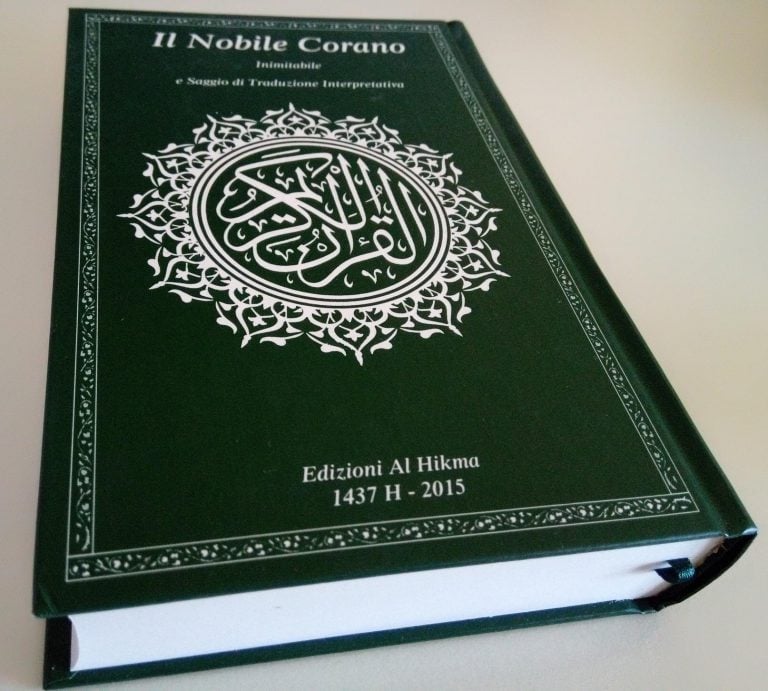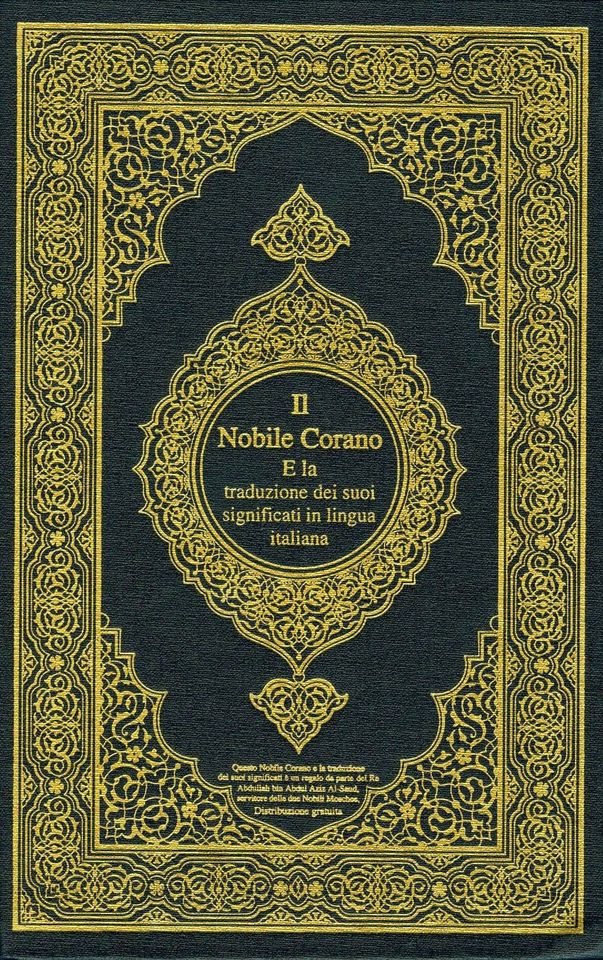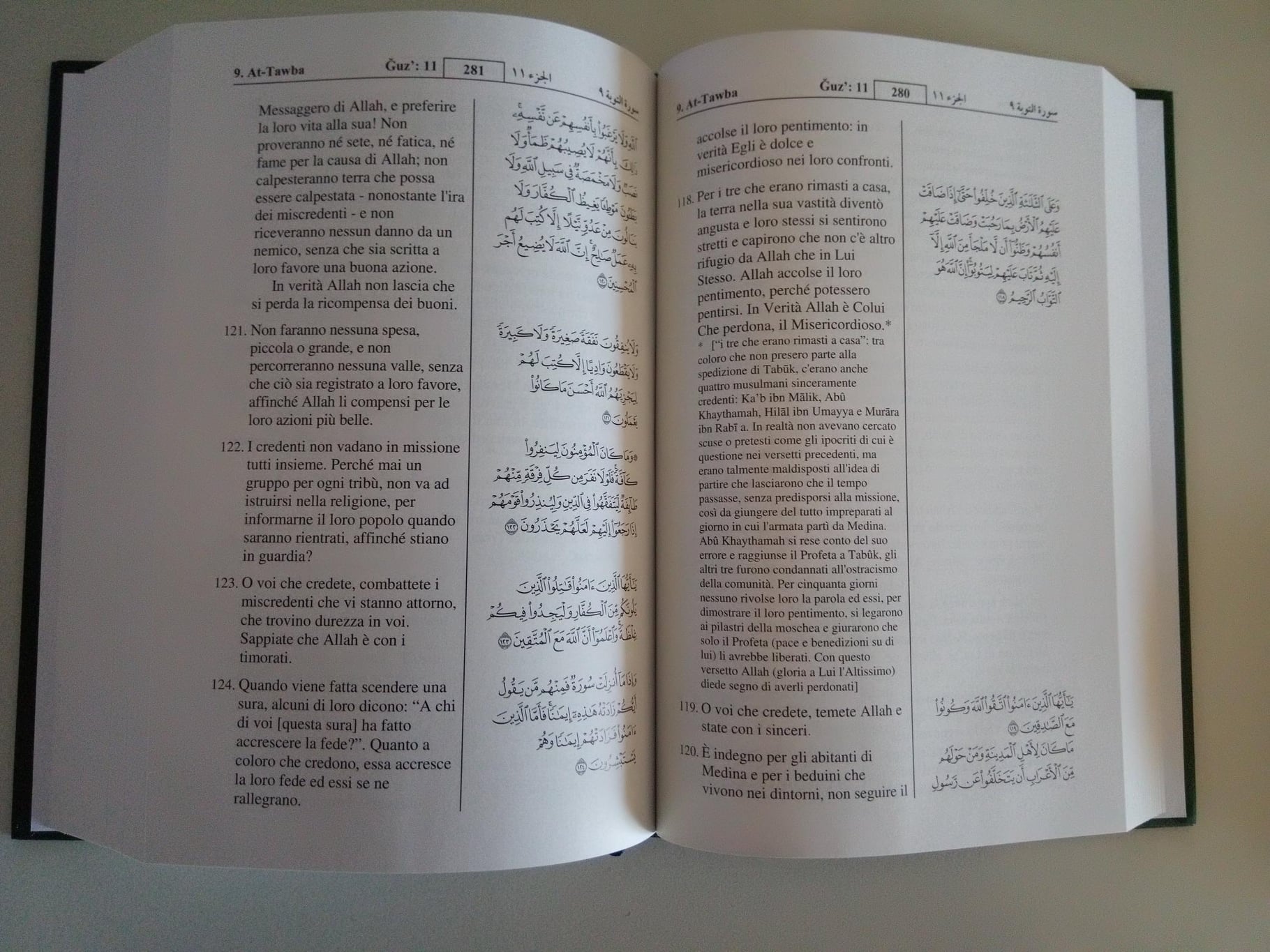Among nearly a dozen modern translations of the Qur’an into Italian, the one by Hamza Roberto Piccardo (born 1952) plays an important role for the Islamic community in the country. First of all, it seems to be the first complete Muslim translation of the Qur’an from Arabic. The Ahmadi translation into Italian (London, 1986) is instead based on Sher Ali’s rendition in English. Secondly, Piccardo’s translation has been widely promoted through different Muslim organizations in Italy like the Unione delle Comunità e Organizzazioni Islamiche in Italia (UCOII) and authoritative institutions in the Muslim world: the King Fahd Qur’an Printing Complex (Saudi Arabia) and the Turkish Directorate of Religious Affairs. Piccardo converted to Islam in the mid-1970’s and became a religious activist, authoring some books on Islamic topics which usually appeared from Al Hikma publishing house.
The 1st edition of his translation was printed in 1994, while the “revised” version (with the help of the editorial committee of UCOII) appeared in 1996. Widely known as the translation “done under the doctrinal control of UCOII”, it gained much attention and was selected for printing by the KFQPC in 1432 (2010-2011). In contrast to previous editions in Italy called simply “Il Corano”, this one took the title “Il Nobile Corano e la tradizione dei suoi significati in lingua Italiana” to accord with the common, modern-Sunni concept of translation as merely “translation of the meanings”.Other changes include updates to some footnotes and the addition of short introductions to the surahs. Moreover, the actual text of the translation has been lightly changed. E.g. Italian editions have “il sangue” for Arabic دم (blood) in Q. 5:3, but the KFQPC edition has “il sangue effuso” (flowing blood) i.e. that which comes out from the animal’s body. This elaboration seems to be done on the basis of tafsirs, e.g. the popular Saudi “Al-Muyassar” interprets the term as “al-dam al-sā’il al-murāq”, which corresponds to the revised translation. Another change is in Q. 5:6, where the Saudi edition provides “mani” (hands) in place of “avambracci” (forearms) in the Italian one; the latter word better conveys the sense of Arabic “aydiyakum”. What seems to be more significant in the KFQPC edition is the changes in some footnotes: most of the “anti-Christian” and “anti-Western” objections in Italian editions were completely removed. Instead, there are rather traditional notes regarding parallels, explained terms and tafsirs quotations (mostly al-Tabari).
There are more in the Turkish edition, published in 2015 by TDRA, along with some introductory statements and appendices discussing the basics of Islam. The title has been changed too: “Il Sacro Corano: traduzione interpretativa in italiano” (“The Sacred Qur’an: an interpretative translation into Italian”). The core text of the Turkish edition is based on the previous Italian versions, not that of KFQPC.Some of the core lexical features were preserved in all three editions: for example, for Qur’anic “al-naṣārā” usually translated as “Christians”, Piccardo used “nazareni”, describing his choice as the one that faithfully reflects the Arabic text:
“Per ragioni di fedeltà al testo coranico… «nazareni» deriva da Nasira (Nazareth) la città natale di Gesù” (“For reasons of fidelity to the Qur’anic text… “nazareni” is derived from Nasira (Nazareth), the city where Jesus was born”) – Piccardo All other Qur’an translations into Italian, however, use more conventional “cristiani”, so the question arises: did the translator intend to distinguish between 7th-century and present-day Christians, or were there other reasons for that choice?
Editions of Hamza Piccardo’s translation illustrate various contemporary translation strategies, mostly reflected in footnotes. The 1st edition, issued in Italy over 20 times, shows a kind of ideological approach of Islamic missionary action in a predominantly Christian society. The one by KFQPC pays more attention to the historical, theological and ritualistic discourse of the Qur’an; while recent editions from Turkey attempt to produce a comprehensive manual to introducing the Holy Book of Islam with plenty of extra-Qur’anic material. Up to now, the translation is a major domestic reference for Italian-speaking Muslims.
Mykhaylo Yakubovych



